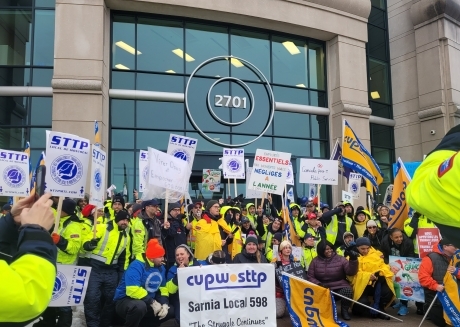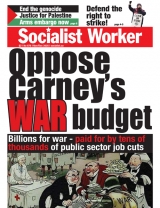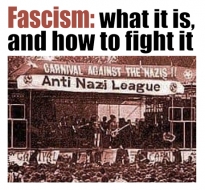What we think
You are here
CUPW strike - How to stop the attacks on workers rights

December 19, 2024
Trudeau’s assault on workers rights has hit a new crescendo with the forced shut down of the postal workers picket lines.
The Federal Government had already intervened this year to shut down strikes by ILWU organized port workers in BC, Montreal and Quebec City, ordered the Westjet mechanics and railway workers back to work and now they have used a back door order from the Canadian Industrial Relations Board (CIRB) to shut down postal workers’ picket lines.
The use of back to work legislation is a slap in the face to the democratic decision by postal workers to take strike action to improve their wages and working conditions – not just in a ballot, but also in the large numbers on picket lines.
In fact, the right to strike itself is being eroded. Section 107 of the Labour Code is being used by a Federal Labour Minister for the 4th time this year to stop a workers’ strike.
There is a consistent pattern to this new attack. The bosses refuse to negotiate, then wait for the Federal or Provincial Governments to come in and save them by forcing the workers back to work.
This inevitably benefits the employers in any industrial dispute as momentum in a strike is lost and has to be rebuilt if the fight is to start again at a later date.
Could CUPW have defied the back to work order?
On December 16, at the very same time that workers rallied outside MP Chrystia Freeland’s office, the news came in that she had resigned as Finance Minister and Deputy Prime Minister. The same day, Minister of Housing Sean Fraser announced he was resigning. CUPW members and supporters chanted for Labour Minister Steve MacKinnon to resign. The anger at the federal government for once again heavily tipping the scales in favour of the employer, was palpable.
A sizable minority of CUPW strongly expressed a willingness to defy MacKinnon’s back to work order. In fact, workers in locals in many places across the country continued to picket even after the deadline for them to return to work had passed.
If CUPW national leadership had decided to defy, could this have won support of CUPW members who were pessimistic or demoralized? Could it have forced the hand of CLC and provincial federation leaderships who have talked about “drawing a line in the sand” against the federal government’s addiction to back to work legislation, yet have left it at nice words and not action?
It is true that CUPW cannot fight alone. But determined action by one group of workers can tip the balance in mobilizing solidarity and tap into the pent-up anger among large sections of workers.
And the numbers suggest there is a mood to fight. More than 1.4 million workers in Canada have struck since 2022. Cost of living increases have created great hardship for millions and the general public is feeling the pinch. The solidarity on the lines and at rallies shows a much broader range of people want to see some kind of push back against the billionaire bosses.
We have seen many other union leaders calling for this strike breaking to end.
Rob Ashton, the president of the International Longshore & Warehouse Union Canada (ILWU) said “The federal government is spitting on workers rights and giving a free hand to the employers right now to run roughshod over us all.” The union is calling to revoke the federal government’s ability to use section 107 to end strikes.
A letter from the Alberta Federation of Labour put it bluntly “Our first demand is for Federal Labour Minister, Steve MacKinnon. In recent comments to the House of Commons, you acknowledged that all Canadian workers have a constitutionally protected right to strike. But then you went on to suggest that four weeks is enough. So, which is it? Do workers have the right to strike or not? With due respect, you may be a Minister of the Crown, but that does NOT entitle you to put a time limit or an expiry date on the rights of Canadians.”
And we don't have to look too far into the past to see moments when workers defied back to work legislation. The Westjet mechanics won after being ordered back to work. The education workers in Ontario were threatened with massive fines if they struck and they walked out anyway, forcing the Ford government to rescind their anti-union laws.
A coordinated push from the CUPW leadership and/or a call from the union federations could have tipped the balance in the case of this strike. Either way, at some point the unions will have to decide if they are going to fight or watch the right to collective bargaining be further eroded.
The CUPW leadership says it will challenge the use of section 107 in the courts, but that process may take many years and the conditions for workers will not improve while the wait for the courts drags on.
Anti-union laws and privatization
The drive towards privatization is being enabled by anti-union laws. Where unions are banned from striking, the deterioration of services advances at a much higher rate.
In Ontario, the limits set on healthcare workers effectively eliminates their right to strike and the anti-union law 124 savaged the sector helping speed up the process of privatizing services. When members of ATU 113 in Toronto were banned from striking, we saw an increase in the rate of cuts to the system furthering the privatization agenda.
In his referral to the Canada Industrial Relations Board (CIRB), MacKinnon announced an Industrial Inquiry Commission under William Kaplan. It will be tasked with examining the structural issues preventing the resolution of the current labour dispute. According to the minister, “The IIC will have a broad scope to examine the entire structure of Canada Post from bottom to top, both at customer and business model standpoint, considering the challenging business environment now facing Canada Post.” This will be another opportunity for the bosses to push for privatization of Canada Post.
Indeed, that was the call from the corporate press from day 1 of the strike. They called Canada Post an anachronism that needed to be dismantled and sold off for parts. This directly contradicted the other line main line of attack from the bosses which said that the CUPW strike needed to be stopped because Canada Post was an essential service and the disruption of the strike a threat to business.
What the articles failed to mention is that Canada Post was not set up to be a money making enterprise but to be a service that all people could use. The number of isolated communities in this country and the vast distances that parcels have to travel means that there will be areas outside of population concentrations where delivery will never be profitable.
But as is the case with most public services, they are under threat by privatized models that generate huge profits, like Amazon. But the Amazon workers are treated very poorly and have little or no benefits as they work long hours. If the capitalists look to that model, we will see a race to the bottom as far as workers rights are concerned.
Class consciousness and the return of the strike
The millions who have gone on strike over the past few years are increasingly clear that the bosses need them more than they need the bosses.
The ‘heroes’ who kept the profit system moving during the Covid pandemic are angry at their treatment by employers who have reneged on promises for better wages and conditions.
Maha Sawi, a driver at the Gateway Canada Post plant in Mississauga told Socialist Worker “We’ve been struggling for 4 years without any raise while the management gave themselves a raise. We are not getting any bonuses while the management gets bonuses. When the workers strike, the service has been interrupted and the work stops and the revenue stops. When the management doesn't go into the offices the work is still going and the revenue is still going.”
The mood among the working class is potentially explosive – but it is lacking the coordinated direction that could become a serious fightback. What is urgently needed is to build rank and file networks that are not beholden to the indecision at the top of the trade union apparatus. The strike by postal workers shows how such networks can be built.
Evident at the Toronto support rally December 16 were reps and speakers from Toronto and York Region Labour Council, Steelworkers Toronto Area Council, IATSE, ETFO, Education workers and many others. In Montreal, local union reps like the FTQ Construction union members picketed at the Leo Blanchette processing plant in solidarity. This local aspect is important for members in one union to connect with local members of other unions. Militancy at the local level of a national union has the potential to spread across the country, putting rank & file members in communication with each other – rank and file organizing inside their unions and with other unions.
Also, in many places local community organizations and unaffiliated activists also showed up, such as the Immigrant Workers Centre in Montreal.
CUPW top leadership is focused on negotiations and legal challenges, as they have to. But the miltancy on the ground was not mobilized in ways it has been in the history of postal workers strikes. Mobilizing was too focused on support for the negotiators and negotiations. But the mobilizing also took on a more militant dynamic too, at each local across the country. There were so many committed union members. The potential for a win through rank and file mobilization was there, but not realized. Learning the lessons and applying them in the struggles ahead is key to ensuring that fierce class anger is not channeled to the right.
Building the working class movement is the antidote to the many crises of capitalism, from the cost of living crisis to the climate crisis to the rise of the racist far-right. Labour holds all the keys when it comes to the real power in society. All the wealth used by the billionaires to keep us down comes from the sweat of the working class.
It is crucial to find a way to build this momentum into a fighting workers movement.
Section:










